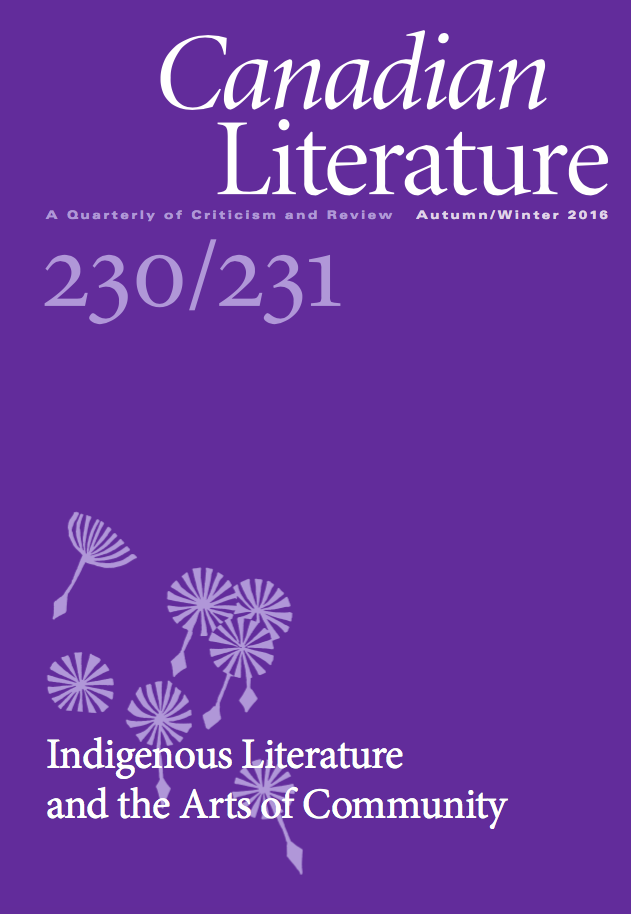“Split With the Kind Knife”: The Regenerative Excisions of Jordan Abel’s The Place of Scraps
DOI:
https://doi.org/10.14288/cl.v0i230-1.187964Abstract
Pointedly engaging the centuries of settler-invader attempts to dispossess and destroy Indigenous communities, Nisga’a poet Jordan Abel makes appropriation and erasure his central thematic and formal preoccupations in The Place of Scraps (2013). The text itself is a series of erasure poems and collages that takes much of its source material from the Québécois anthropologist and salvage ethnographer Marius Barbeau’s canonical Totem Poles (1950). Barbeau, both in Totem Poles and throughout his career, studied a number of Pacific Northwest tribes, including the Nisga’a. At the same time as The Place of Scraps represents a defiant assertion of resistance, it also illustrates a regenerative desire, responding to recent and urgent calls, by Indigenous scholars and activists such as Taiaiake Alfred, for the reassertion and resurgence of Indigeneity in the present moment.Downloads
Published
2017-10-06
Issue
Section
Articles


